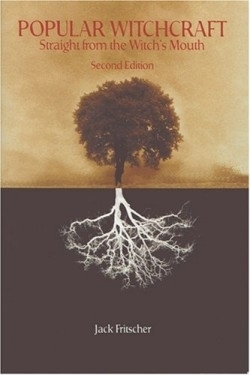Popular Witchcraft
Straight from the Witch's Mouth
- 2005 INDIES Finalist
- Finalist, Popular Culture (Adult Nonfiction)
This book opens with an interview with Anton LaVey, notorious high priest of the Church of Satan. An ex-policeman, LaVey professed to be against both the use of drugs and bringing harm to the human body, yet was, in his own words, an “evil outcast.” Nevertheless, he enjoyed this role, and stated to the author that the satanist is the “ultimate humanist” because satanists revere the human body.
Fritscher is a former Roman Catholic priest and an ordained exorcist. His path from there to his immersion in the realm of satanists like LeVey, and in the occult before the term “New Age” was even whispered, is fascinating. After he became disenchanted with the Roman Catholic Church, Fritscher wrote articles and books on the counterculture of the sixties. Though now even late-night radio broadcasts interviews with witches, Wiccans, and Shamans, in 1972, when Fritscher’s book was first released, the world of alternative religion was partly folded into the so-called “Age of Aquarius.” The spirit of the times captured the author’s imagination and led to his long adventure into the occult.
From Nathaniel Hawthorne, whose great-grandfather presided over the Salem witch trials, to The Wizard of Oz, to the counterculture musical Hair and on to Arthur Miller’s play, The Crucible, the author shows that there is indeed a “popular culture of American sorcery.”
The book is packed with rich detail, such as Fritscher’s examination of the connections among Paul Anka’s 1950s tune “Diana,” the cult of the moon goddess Diana, and why the Virgin Mary was sometimes depicted standing on a crescent moon. However, most of the interviews in this book were conducted more than thirty years ago, and an abundance of books on witches and witchcraft have been published since then. Readers may wonder what prompted the author to release a volume that to some may appear quite dated. Fritscher points to recent attacks on religious freedom by fundamentalists of both Judeo-Christian and Islamic beliefs as the impetus for releasing a second edition of his book.
As the author says, certain elements of American culture “see Satan everywhere” and his book shows that the “personal freedoms inherent in witchcraft threaten those who refuse to separate church from state.” In essence, the nature religions such as Paganism and Wicca preach freedom and tolerance of differences, and as the author holds, there is much to be said for “invoking guardian angels” and “worshiping something of one’s own free choice.”
Reviewed by
Carol Lynn Stewart
Disclosure: This article is not an endorsement, but a review. The publisher of this book provided free copies of the book to have their book reviewed by a professional reviewer. No fee was paid by the publisher for this review. Foreword Reviews only recommends books that we love. Foreword Magazine, Inc. is disclosing this in accordance with the Federal Trade Commission’s 16 CFR, Part 255.

